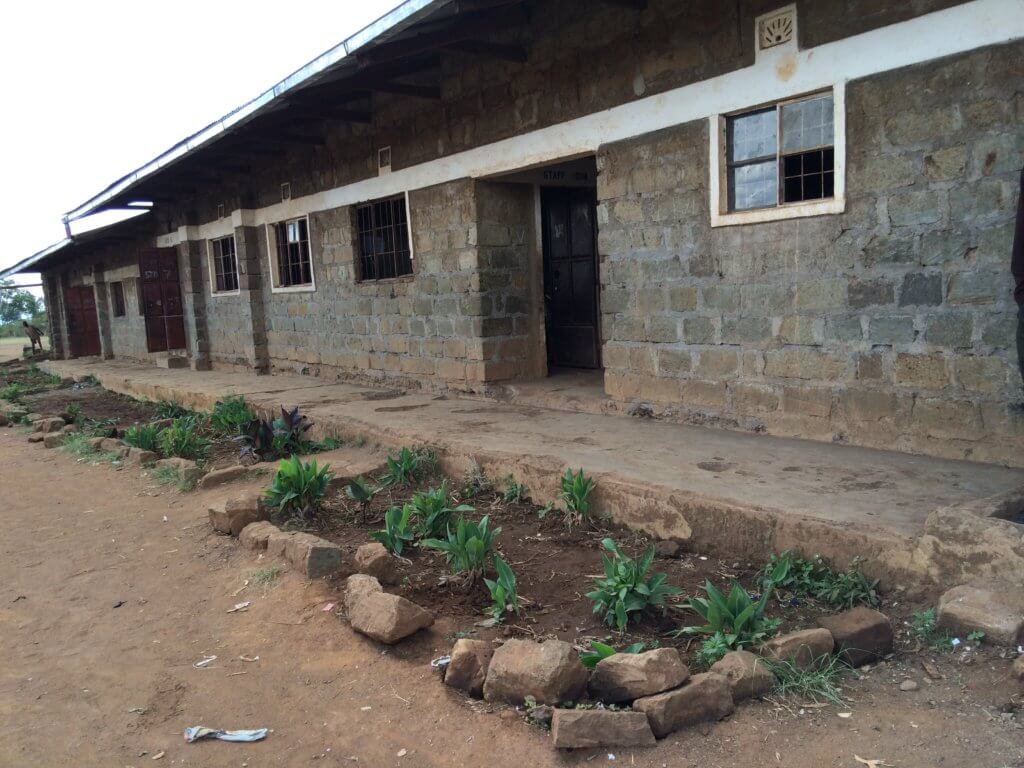Not so long ago, William Aludo, EC’s Program Coordinator in Kenya, sent me photos of students from Miruya Primary School. This is the school where EC recently built a new classroom. The children were collecting water from a muddy river William called the “seasonal” Kaboro River.

The next batch of photos featured children walking along a dusty road with large jerry cans on their heads. These cans were filled with the water they had just collected.

Collecting Water
From a cultural standpoint, it isn’t so strange to see children carrying or collecting water in Kenya. Water is necessary to live, and most if not all of these children live in homes where there is no running water. The responsibility of collecting water is often left to children. But to our North American eyes, the sight of a young child scooping muddy water from a shallow river gives us pause.
Waterborne Illness
Waterborne diseases are the number one leading cause of death in Kenyan children under the age of five. Among the more popular solutions to the problem of unsafe drinking water are water filtration systems, rain harvesting systems, and borehole drilling.
Providing Clean Water
Everyone’s Child is committed to providing potable water at schools where we support students. In 2014, EC partnered with Christian Broadcasting Network to install a rain harvesting system at the Lord Ranjuera Primary School in Kampi Ya Moto, Kenya. Before the system was in place, children were getting water from a muddy river that was a two-mile walk from their village. The mortality rate in that area was also extremely high among young children.

Today the red dust that dominated the area around this primary school has been replaced by a garden, and joy can be seen on the faces of all the children.


How You Can Help
Explorations into the provision of clean water at the Miruya Primary School have begun. In the coming months we will be launching a campaign to raise funds for this effort. If you would like to add your support, please click here to make a secure donation. Our goal is to ensure that the children and staff at the Miruya Primary School will have clean drinking water by this time next year. Stay tuned for more updates on this project!
Blessings,
Ruth













